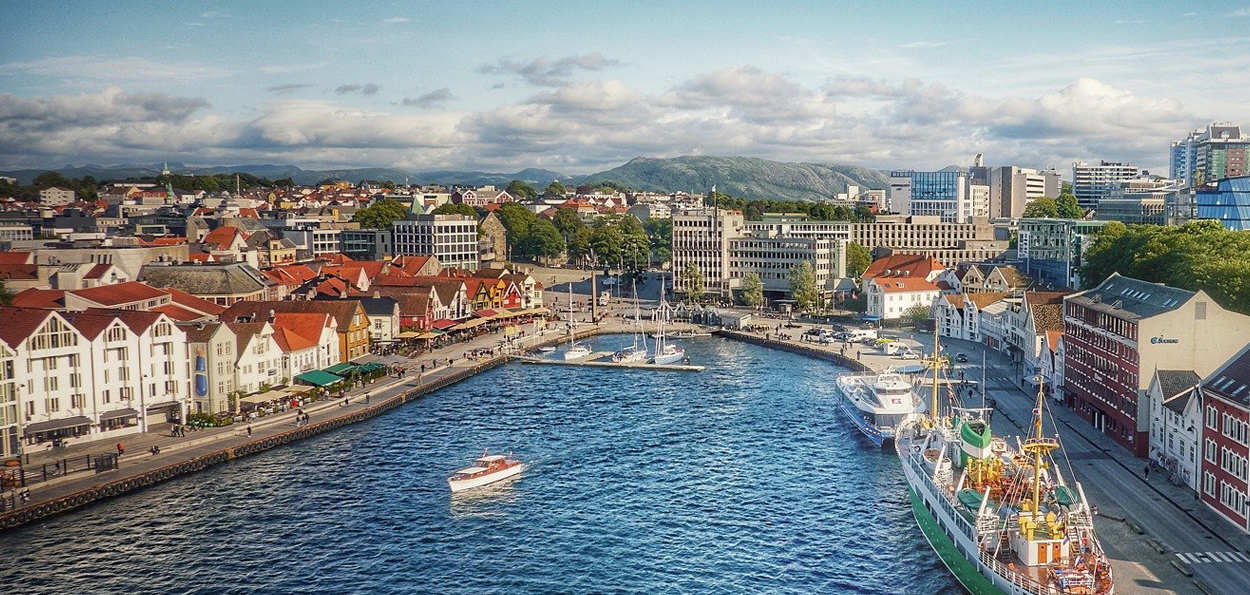
Field: Strukturomvandling
Nordic study on regional policy and adaptability
The purpose of the study is to contribute knowledge and experience about the Nordic countries' regional policies and efforts to deal with economic crises in regions or municipalities. The questions posed by this study are the following:
- How do the countries define regional policy?
- What does the countries' regional policy context look like and what responsibility do the actors have at different levels in the multi-level system?
- What tools do countries have for adjustment/recovery in the event of economic crises or shocks?
- How do actors at different levels interact to handle adjustment/recovery?
The study is based on document studies and semi-structured interviews with representatives of the regional political system at national and regional level, as well as with researchers in the field of knowledge. The data collection was carried out during 2020. A short bullet list with a selection of important events in the area that took place after the actual data collection up until publication (September 2021) can be found in Appendix 1.
Two in-depth case studies have also been conducted in each country. The purpose has been to illustrate different kinds of economic crises and shocks, sudden and slow (so-called slow burns).3
The results of the study show that the meaning of the term regional policy has changed over time. The focus has shifted from equalisation policy to competitiveness. Nor does the term have the same meaning in the different countries. In Sweden, for example, the term regional growth policy (regional tillväxtpolitik) has shifted to regional development policy (regional utvecklingspolitik). In Norway, rural policy (distriktspolitikken) plays an important role and contains many different instruments, including differentiated employer contributions.4 The term regional and rural policy (regional- og distriktspolitikk) is now increasingly used here. In Denmark, regional policy is equated with trade and industry policy (erhvervspolitik). Such differences create difficulties in country comparisons, for example when it comes to assessing what resources the countries are investing in regional policy.
In all essentials, we see that all countries make a division between what is called the “small” regional policy – that is to say the regional growth/development policy in the Swedish context – and the “large” regional policy - that is to say the sector by sector policy areas. The sector by sector policy areas in many cases have major societal transformational effects in the regions, including in terms of infrastructure, education and the labour market. In all countries, there are tax equalisation systems aiming at reducing local and regional inequalities through contributing to the redistribution of resources.
Despite many similarities between the countries, we see significant differences when it comes to institutional conditions. The differences reflect how the countries address regional policy issues. All countries have an administrative system with three levels: the national, the regional and the municipal. The countries have also in recent decades implemented municipal and regional reforms to meet the welfare obligations. At the regional level, we find directly elected regions in Sweden, Norway and Denmark (in Norway counties, fylkeskommune), while the regions in Finland (provincial federations, landskapsförbund) are indirectly elected. The regions have a responsibility for regional development in all countries, but the scope of tasks and mandates are different, especially in the case of Denmark. The responsibility for implementing regional policy initiatives (trade and industry policy, erhvervspolitik) there rests with the so-called inter-municipal trade and industry houses (tvaerkommunale erhvervshuse) and not with the regions.
Because responsibility for regional policy is divided between different levels and actors, multilevel governance plays an important role. In terms of managing both the implementation of regional policy and the adjustment process in the event of an economic crisis or shock.
Countries have chosen different institutional structures and systems to deal with changes caused by economic crises or shocks. For example, Finland has established special systems for negative change, long-term structural change and positive shocks. Sweden, on the other hand, mainly uses existing administrative structures and developed fora for multi-level governance that can be used both under normal conditions and during an economic crisis or shock. However, there have been special "package solutions" (paketlösningar).
Denmark also mainly uses already established institutions and instruments. Especially employment agencies (job center), regional labour market councils and inter-municipal trade and industry houses. Norway has a long tradition of rural policy and there has long been a policy here that aims to support long-term development in rural areas. Important instruments in Norway include differentiated employer contributions and investment support. There is also a broad portfolio of different initiatives (the so-called instrument apparatus, virkemiddelapparatet) that can be used for initiatives of various kinds and which are administered by NAV5, the regions and Innovation Norway.
It is difficult to measure the effects of both regional policy and rural policy initiatives and of adjustment measures in the event of economic crises or shocks. This is not least due to the counterfactual circumstances: What would have been the outcome if the measures had not been taken? An example of these difficulties is shown in the case study of the effects of the 1994 Lillehammer Olympics. The time perspective also comes into play. With regard to the effects of LKAB's investment and relocation in Kiruna as well as the investments in the Fehmarn Belt bridge in Denmark, it is too early to assess the short- and long-term effects.
In Finland, however, evaluations have shown that a number of those laid off in Nokia's closures, where adjustment initiatives have been made, have returned to work. In Stavanger in Norway, there are positive effects of previously implemented initiatives to mitigate the effects of the oil price shock.
The case studies consistently show that cooperation that builds trust between the actors and a place-based and well-functioning multilevel governance seem to be the most important keys for dealing with both structural change and economic crises or shocks.
Nordic study on regional policy and adaptability
Serial number: Rapport 2021:05
Reference number: 2020/57

